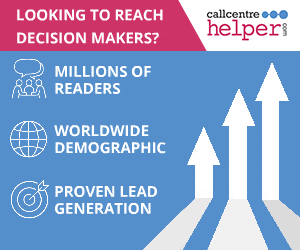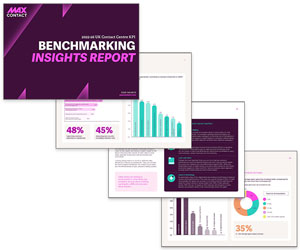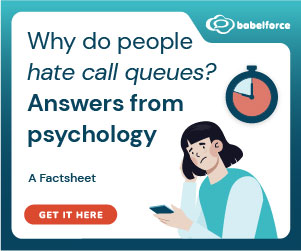As customer expectations continue to evolve in the digital age, self-service has become an essential element of modern customer support strategies.
By empowering customers to resolve issues independently, self-service capabilities can reduce operational costs, decrease wait times, and improve overall customer satisfaction.
Self-service solutions powered by AI allow for personalized, real-time interactions that can handle complex requests without involving live agents.
This, in turn, frees up support staff to focus on more intricate tasks, enhancing both agent efficiency and the quality of customer care.
The following case studies illustrate how top organizations across various industries are implementing AI-driven self-service solutions. These examples highlight the transformative impact of self-service capabilities on customer experience and operational efficiency.
1. NICE Streamlines Self-Service at The Standard
The Standard, a major financial services company, faced a growing need for a streamlined, AI-enabled self-service system to handle complex financial enquiries.
By deploying NICE’s Enlighten Autopilot through the CXone platform, the company transitioned from a static IVR system to a more sophisticated, conversational AI interface.
This transformation provided customers with accessible self-service options, enabling them to manage queries without agent assistance.
The shift also allowed The Standard to capture valuable insights through IVR surveys, achieving a 40% response rate that helped inform further improvements.
The company continues to focus on enhancing containment rates to maximize self-service success, positioning the contact centre as a strategic asset within the organization.
Read the full case study on how NICE Streamlines Self-Service at The Standard
2. VSP Vision Care Strengthens Support With Five9
VSP Vision Care, with over 85 million members globally, required a scalable solution to handle its high call volumes and support remote work.
The company implemented Five9’s Intelligent Virtual Agent (IVA), which is central to a vast self-service infrastructure, handling over 95% of inbound calls.
By integrating natural language processing and AI, VSP’s IVA addresses common enquiries such as benefit information and provider support, saving over $100,000 annually by reducing dependency on outsourced services.
This self-sufficiency has allowed VSP to quickly adjust to customer needs, offering reliable self-service that complements agent support and enhances operational scalability.
Read the full case study on how VSP Vision Care Strengthens Support with Five9
3. Sprinklr Enhances Utility Warehouse’s Customer Engagement
Utility Warehouse (UW), a UK-based multi-services provider, sought an easy-to-deploy self-service system to handle increasing customer interactions.
Through Sprinklr’s self-service suite, UW integrated its WhatsApp Business Account, enabling conversational interactions that guide customers efficiently through frequent queries.
The AI-powered ticketing console and canned response features significantly reduce repetitive enquiries, cutting down live agent dependency.
Within a year, UW achieved a 48% increase in first-contact resolution and saw five-star reviews rise from 66% to 93%, demonstrating how Sprinklr’s self-service capabilities drive efficiency and elevate customer satisfaction in the digital age.
Read the full case study on how Sprinklr Enhances Utility Warehouse’s Customer Engagement
4. WaFd Bank Innovates With Talkdesk and Amazon Lex
Washington Federal Bank (WaFd) leveraged Talkdesk Financial Services Experience Cloud alongside Amazon Lex to create a cutting-edge self-service platform that would meet customer demand for seamless banking support.
By incorporating voice biometrics for authentication, the system allowed clients to use voice commands, such as “My voice is my password,” reducing the time spent verifying identities.
This self-service innovation has led to a 90% reduction in calls reaching agents, with most customers accessing information independently.
Talkdesk’s AI-powered interface has also allowed WaFd to cut call handling time to 28 seconds, while real-time information transfer has equipped agents with essential data before calls, enhancing the bank’s efficiency and service delivery.
Read the full case study on WaFd Bank Innovates with Talkdesk and Amazon Lex
5. Westminster City Council Elevates Public Services With 8×8
Westminster City Council introduced 8×8’s Intelligent Customer Assistant (ICA) to streamline its self-service offerings, starting with waste management queries.
This AI-powered chatbot was quickly integrated into the council’s contact centre, providing round-the-clock assistance and offering efficient support without requiring agent involvement.
The success was immediate, with an impressive 80% resolution rate for incoming queries and user-friendly backend analytics that enabled continuous improvements.
Moving forward, the council plans to expand ICA’s scope to cover additional use cases, further enhancing self-sufficiency for its constituents and allowing agents to focus on more complex issues.
Read the full case study on how Westminster City Council Elevates Public Services with 8×8
Looking for more real-world examples for your contact centre applications? Check out Call Centre Helper’s collection of over 150 case studies
If you are looking for more on AI and contact centre use cases, read these articles next:
- Our Top Use Cases for AI in Customer Service
- Game On! 12 Use Cases for Gamification
- The AI Revolution – How Contact Centres Are Adapting
Author: James Groves
Reviewed by: Jo Robinson
Published On: 6th May 2025 - Last modified: 7th May 2025
Read more about - Technology, 8x8, Artificial Intelligence (AI), Five9, James Groves, NiCE, NiCE CXone, Self Service, Sprinklr, Talkdesk, Top Story









































